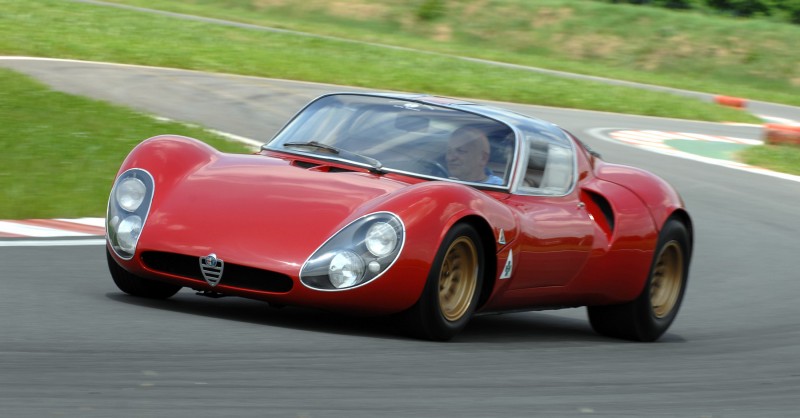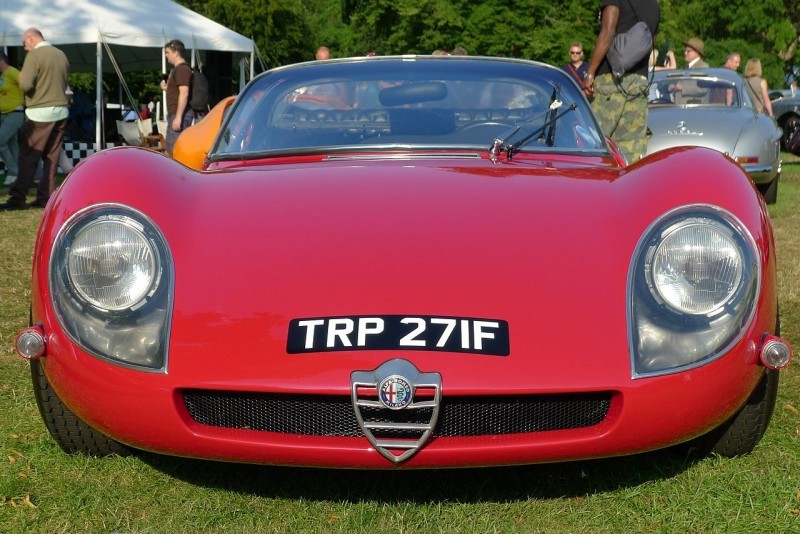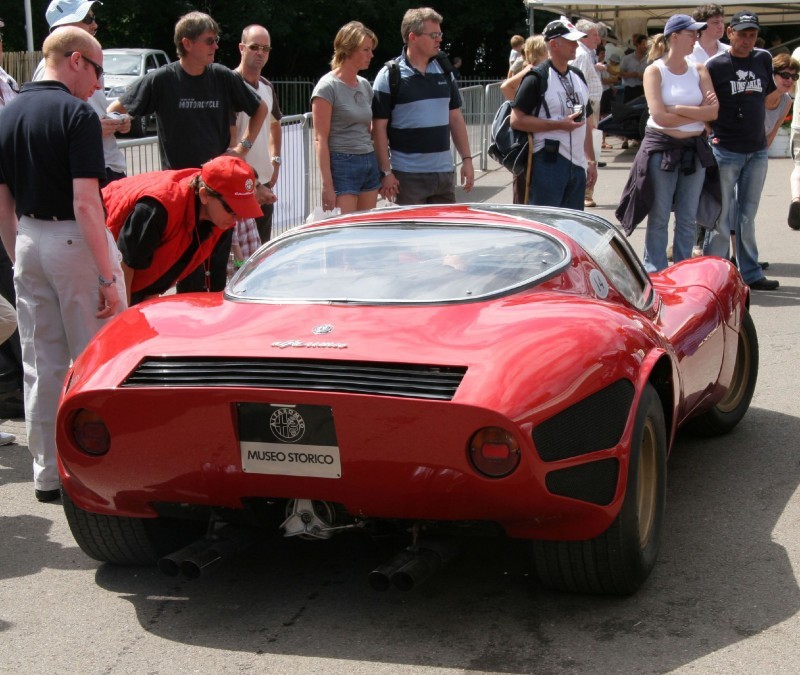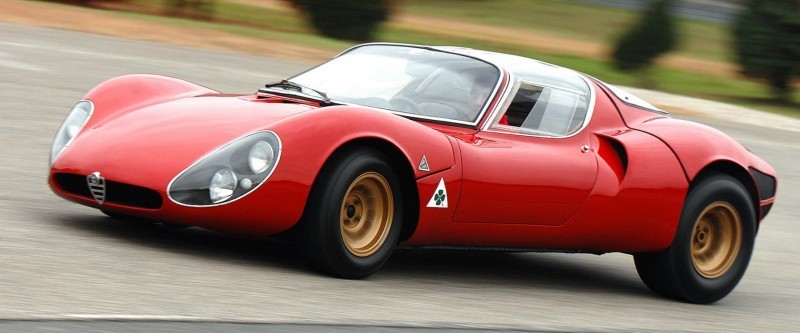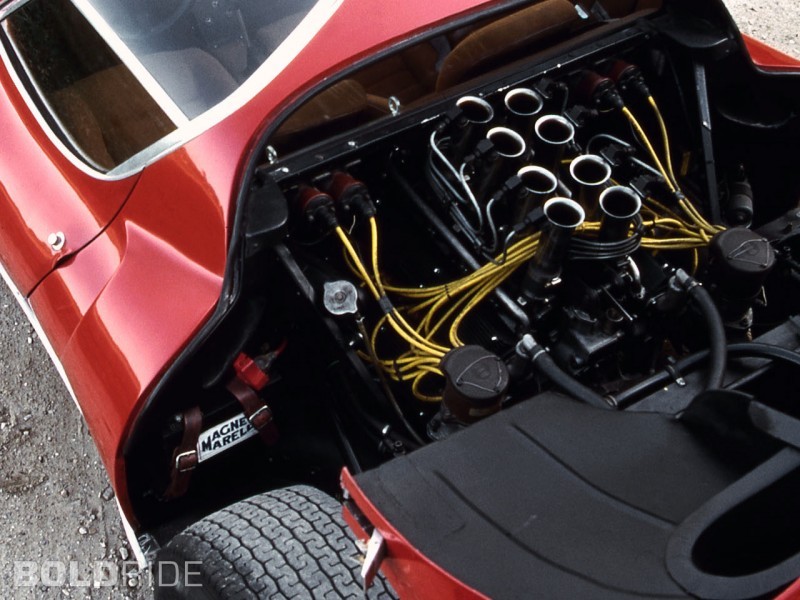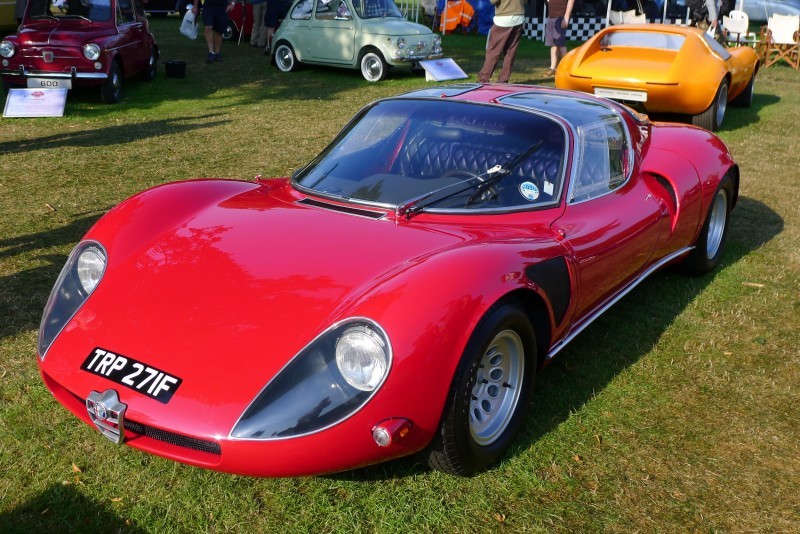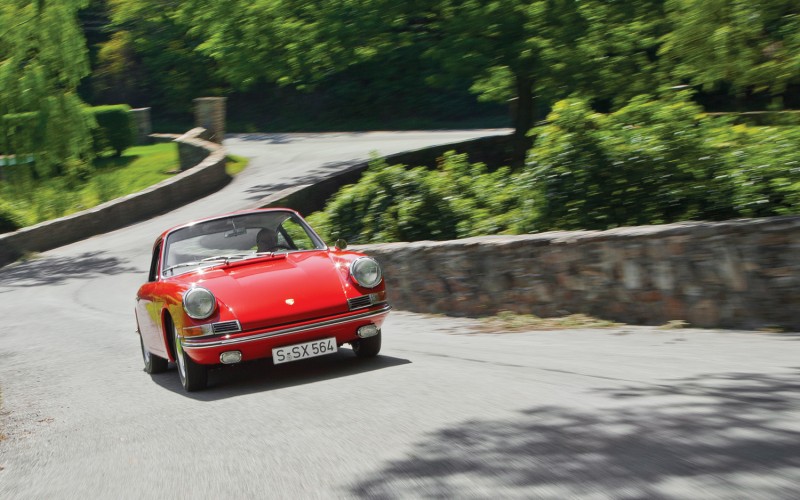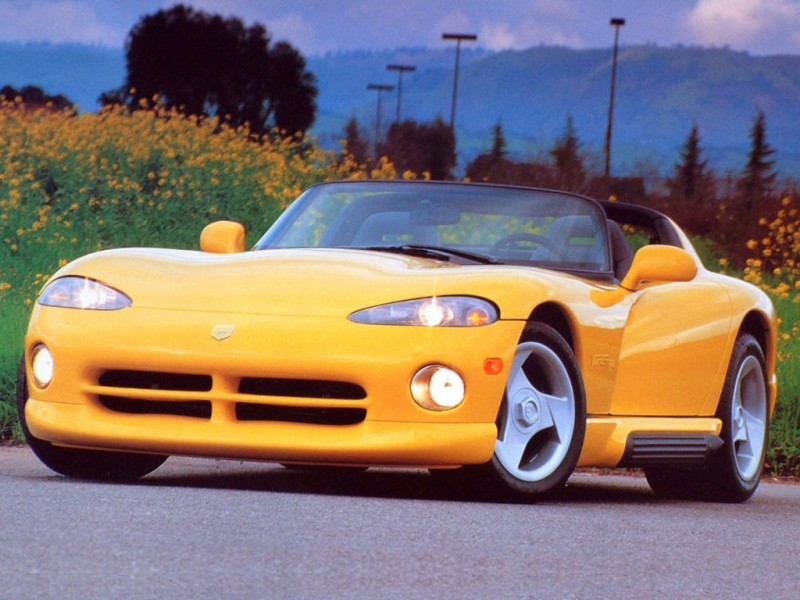As the street-only homologation version of their famous Tipo 33 race car, Alfa’s 33 Stradale is a master’s course in Italian artisanal expertise. Impossibly rare, it is quite possibly the purest example of what an uncompromising supercar from the modern era would have been like if built in the jet-set era.
In 1968, there was not a single car in Europe that you could purchase which would be faster than this. Objectively, there may have been no car nearly as beautiful that you could purchase either. Almost certainly, there was no car that would be as rare in production as Alfa Romeo’s 33 Stradale. A car which, today, few will ever see in person and even less will ever have the honor of driving.
Incredible Exclusivity
Alfa Romeo first derived the Stradale (‘Street’ in Italian) from the Tipo 33 racing car that was being fielded at the time. Although very few components would overlap into the production car, there are many striking similarities. Alfa’s attempt with this car was to utilize some of their racing technology, and expertise, into a road-going sports car – a halo car for the ’60s. However, an introductory price of $17,000 made it not only out of reach to almost anyone but also marked it as the most expensive car sold in 1968. Regardless, with only 18 versions ever being produced the opportunity to obtain one solely lied within the grasps of the wealthiest elites.
Bodacious Body
Penned by Franco Scaglione – a man famous for Bertone designs and Fiats – the first 33 Stradale was constructed in 1967 by Carrozzeria Marazzi. The public would first bear witness to the captivating, swooping design at the Turin motor show later that year. All 18 units would be hand-built aluminum bodies that were seated onto tubular aluminum frames, derived from the Tipo 33 race car. Aside from an incredible body figure, the 33 Stradale was the first car to feature dihedral doors (butterfly doors) in a production car. Further complimenting the smooth shape was that the door glass was rolled upward onto the roof in one solid formed piece per side.
Adding to the rarity is the fact that no two 33 Stradale are alike. Being hand-built over the course of 1967 to 1969 the cars intrinsically possess different design touches as they rapidly evolved. The easiest differentiating factor to notice is that the early cars feature a dual headlight design, the latter maintaining only single bulb units. Additionally, the following models have black front fender and rear fender brake ventilation ducts. More minute differences though include small touches such as the number of wiper blades and even their windshield location.
Freak on the Streets and Stats Sheets
What is common among all 18, only ten remain today, 33 Stradales, however, is that they all feature mid-mounted 2.0 liter V8s. Widely sharing its roots with the Alfa Romeo Montreal’s V8, the motor was inherited more from the Tipo 33’s engine design. A flat-plane crankshaft, dry-sump lubrication system, dual spark plug ignition, and fuel injection were just some of the key similarities they equally possess. Both motors also used four chain-driven camshafts to operate engine timing up to the insane 10,000 RPM redline. At the limit, and in a street tune, the 33 Stradale produced 230 horsepower (270 race tune) and 150 lb-ft of torque – although no two cars share the same power because of being hand-built motors. Another similarity between the Tipo 33 and the Stradale was their 6-speed manual transaxle gearboxes
The performance of the 33 Stradale is still astonishing – even by a contemporary evaluation. At a blistering 5.5 seconds to 60 miles per hour, it is still lightning quick off the line. On a top speed run, you will quickly find yourself pushing toward 160 mph. Also, as mentioned earlier, it held the record for a standing kilometer run of only 24.0 seconds in 1968, which made it the fastest car on the market – not bad.
The performance numbers and horsepower figures belie the actual athleticism of the car, though. What makes the 33 Stradale such a star is because of the 33 Stradale’s featherweight figure – only 1,543 lbs (700kg)! Balancing out that power and weight though are even more true-to-form racing technologies taken from the 33 Tipo. Upper and lower control arms are situated in the front of the car while double trailing arms and anti-roll bars help manage movement in the back.
The wheels are magnesium, as were most racing wheels in the 1960s, and sized to 13” in the front and rear, with a respective 8” and 9” offset. To help bring the beast to a smooth stop the 33 Stradale sported disc brakes at all four corners. However, the rears are set inboard.
Au Revoir Alfa
Honestly, such a magnificent marvel of automotive craftsmanship and racing pedigree deserves to be witnessed more than they seldom are. With only ten of the cars left around the globe, they are mostly kept in private collections and only move around by the Grim Reaper making them available for sale. Outside of those original 18, there were five other concept cars built; each sent to unique Italian coachwork houses to be specially designed.
Even a trip to Alfa Romeo’s museum in Milan will only get you a glimpse of a replica 33 Stradale (built in the 1970s) and these five custom designs. Therefore, if you ever get a chance to see one of the rarest cars on the planet, drop what you are doing and take note because you have witnessed one of the world’s last unicorn.
Specifications:
- Years – 1967 – 1969
- Layout – Mid-engine
- Drive – RWD
- Body Style – Coupe
- Seating – 2
- Motor – Flat-plane V8
- Displacement – 2.0 liter
- Power (hp) – 230 @ 8,800 RPM
- Torque (lbs-ft) – 150 @ 7,000 RPM
- Transmission – 6-speed manual
- Wheelbase – 2,350 mm (92.5 in)
- Weight – 700 kg (1,543 lb)
- 0-60 mph – 5.5 seconds
- Top Speed – 160 mph (260 km/h)

